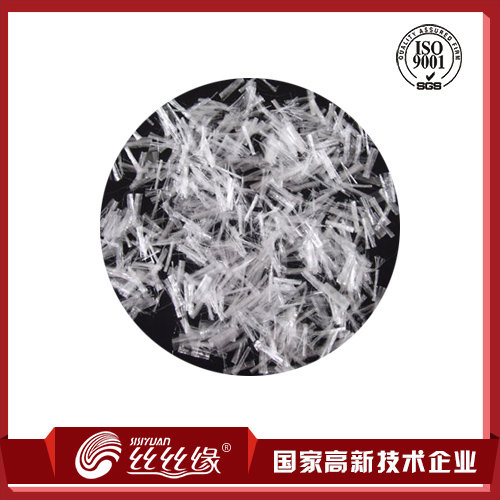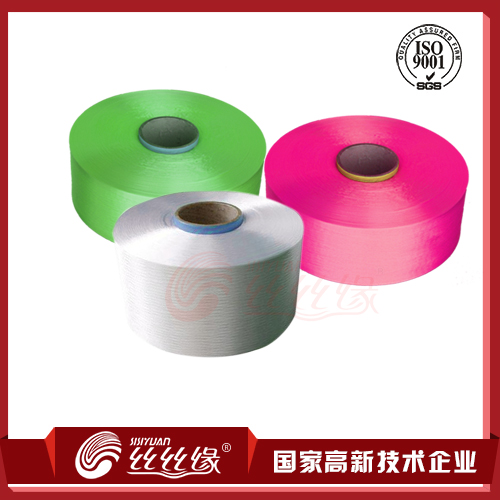
A concept
1.1 What color fiber?
The so-called color fiber is a special composition or structure, after receiving the light, heat, moisture or radiation and other external conditions stimuli can automatically change the color of the fibers. The main varieties of color fiber photochromic and thermochromic two kinds. The former refers to certain substances when exposed to light of a certain wavelength can produce discoloration, while in another one wavelength of light shines down (or heat), what will happen reversible change back to the original color; the latter refers to By special microcapsules adhered fabric surface, use of such microcapsules may change color with temperature changes in the function, leaving the fibers to produce a corresponding color change, and this change is reversible.
Color fiber varieties focused on photochromic. In fact, back in 1989, W. MARCKWALD first discovered on some solid or liquid compounds having photochromic properties, with photochromic properties of organic materials usually have some isomers, such as naphthalene pyran, snails uh triazine and norbornene derivatives. These chemicals by the action of light changes with the two compounds corresponding to the bonding or electronic state, reversibly appear different absorption spectra of the two states to the inverse color, fading and discoloration.
The first application example is the Vietnam War, the United States CYANAMIDE company to meet the requirements of the US combat clothing and the development of a fabric can be absorbed light color change. In China, the use of Donghua University yellowish green trimethylspiro uh-triazine as photosensitizer and polypropylene slice after slice blends made by high temperature melt spinning to form a photosensitive fibers also have good performance. After UV irradiation through the fiber can be quickly changed from colorless to blue light is stopped and then quickly became colorless, and has a good washing performance and a certain light durability. Corresponding products as well as Japan's photochromic KANEBO fabric, but this fabric is made from T-shirts as early as 1989 on the supply market. CLEMSON American universities and polytechnics GEOR-GIA, several universities have recently begun to study changes in the surface of the photosensitive fiber coating material, leaving the color of the fibers to achieve automatic control. In civilian areas, photochromic fiber used primarily for entertainment clothing, safety clothing and decorations as well as anti-counterfeit labels.
Well as a general color material refers to a photochromic material properties of light, heat, electricity and so on. Especially the flash color fiber butterfly wings and peacock feathers more beautiful in the reflected light, because light can participate color better. Based on this principle, such as a professor in Japan invented the flash color fiber. Color changeable fabric made from this fiber, fascinating, this fabric can be used to make clothing and interior decoration and so on.
Type 1.2 discolored fibers
Discoloration of fiber type is roughly divided into the photochromic fiber material, thermochromic fiber material and electrochromic material and the other color fiber materials.
1.2.1 photochromic fiber material
Photochromic materials of the organic and inorganic two kinds. There spiropyran derivatives organic azo benzene derivatives. Advantages of such a material is color: light hair color and eliminate color, but poor thermal stability and oxidation resistance, fatigue resistance is low, and the large environmental impact. Inorganic single crystal doped SrTiO3, can photochromic, which overcomes the organic photochromic material thermally stable oxidation of the poor, the shortcomings of low fatigue resistance, and from the environment. However, the inorganic photochromic materials coloring and decoloring slower, larger particle size. Photochromic and electrochromic material fiber is blended polymer fiber solution spinning, spinning or composite spinning technology blends obtained by photoluminescence.
The photochromic color change fiber is a fiber occurs too much sunlight or ultraviolet light, etc., when the light disappears will reversibly returns to its original color. Since 1899 found that certain compounds of solid and liquid photosensitive performance since the research on a variety of photosensitive material aroused great interest. Japan first developed a photochromic composite fibers, and thus had a variety of photosensitive fiber products based system, such as floss, knitting yarn, woven yarn, used for decorative leather, shoes, sweaters, etc., widely loved by the people .
After photochromic fiber material in this area, there are many examples, such as acrylic fabric with a cationic dye molecules were discolored dyeing and finishing, which change color under different light sources, so that color jersey. Leveler, antacids have a certain impact on the color effect. The results show that: 1227 leveler and glacial acetic acid, fabric discoloration best. Color acrylic knit finishing pieces must be open before drying, drying temperature should be at 98 ℃ ~ 100 ℃. Fibers prepared by this process, the fabric at different wavelengths of light have different colors, all belong to the photochromic fabric. There is a Japanese company will absorb the 350nm ~ 400nm wavelength ultraviolet later changed from colorless to light blue or dark blue snails furans photosensitive material encased in microcapsules made of photosensitive printing process for color fabrics. Microencapsulation can improve the antioxidant capacity of the photosensitizer, thus prolonging life. Using this technology to produce photochromic T-shirt has been supplied to the market in 1989, in recent years, the country has a similar product sales.
1.2.2 thermochromic fibers
Thermochromic fiber refers to fiber color change with temperature change. Obtain thermochromic fibers method except that the thermochromic agent filled inside the fibers, it can also be a vinyl chloride polymer solution containing thermochromic microcapsules applied to the fiber surface, and heat treatment to make the solution gel obtained reversible thermochromic effect.
For example, in 1988 Toray developed a temperature-sensitive fabric Sway, this fabric is heat-sensitive dye is sealed within the capsule 3 ~ 4m in diameter, and then coating the surface of the fabric. This glass substrate within microcapsules contain three major components: thermochromatic dye; and pigment binding energy show another color color-developing agent; make a combination of pigment and color at a certain temperature agents isolated and dissolves dye or a color developing agent, alcohol decolorizer. 3 by adjusting the composition ratio can be obtained with the color temperature change microcapsules, and this change is reversible. It has four kinds of color, but can be combined into 64 different colors.







